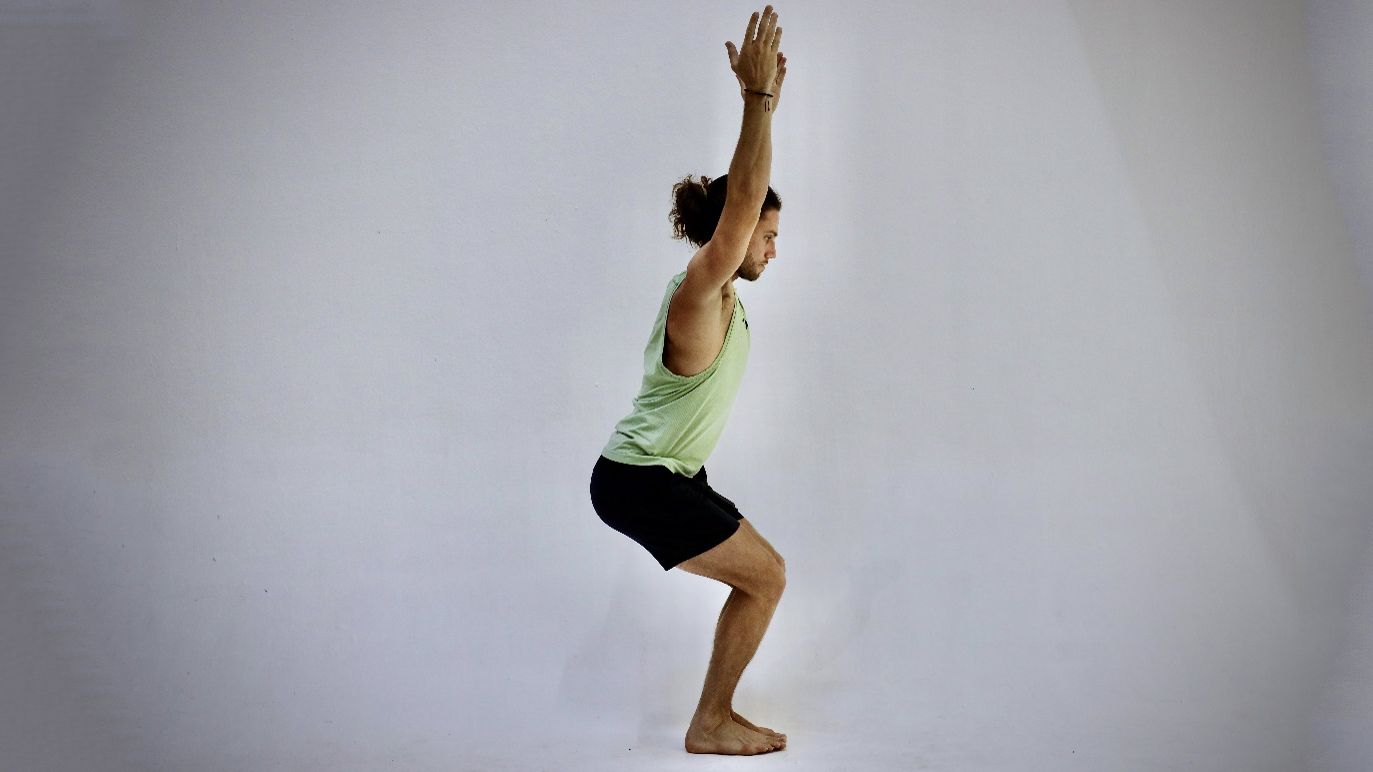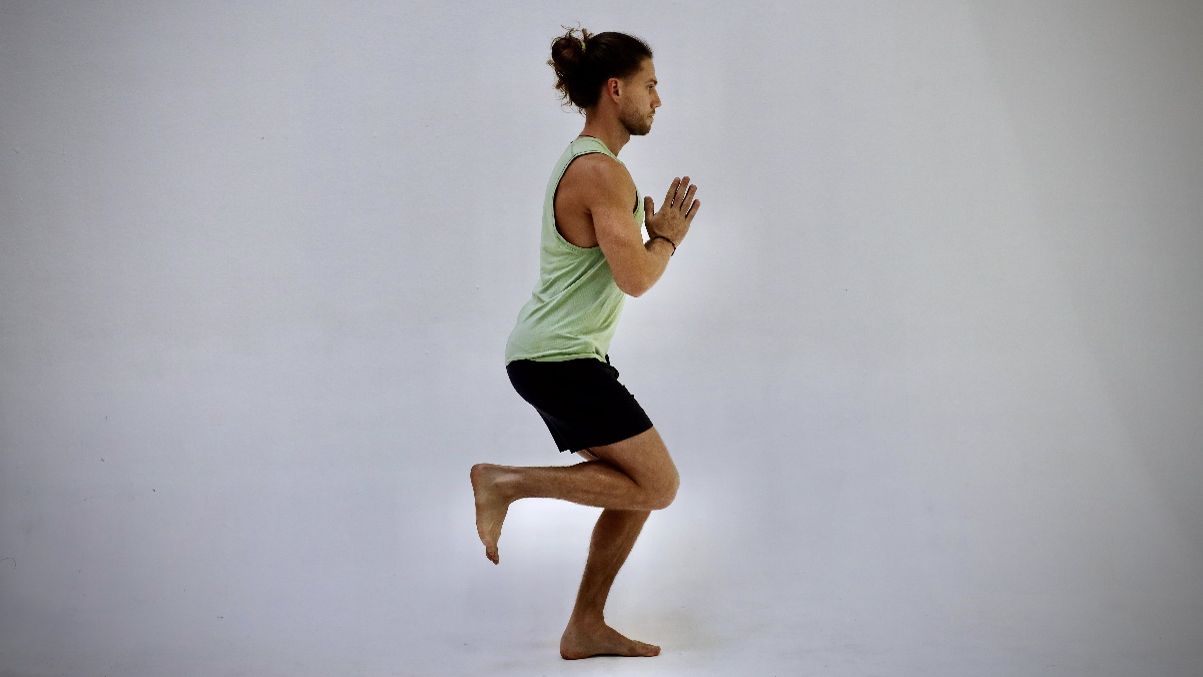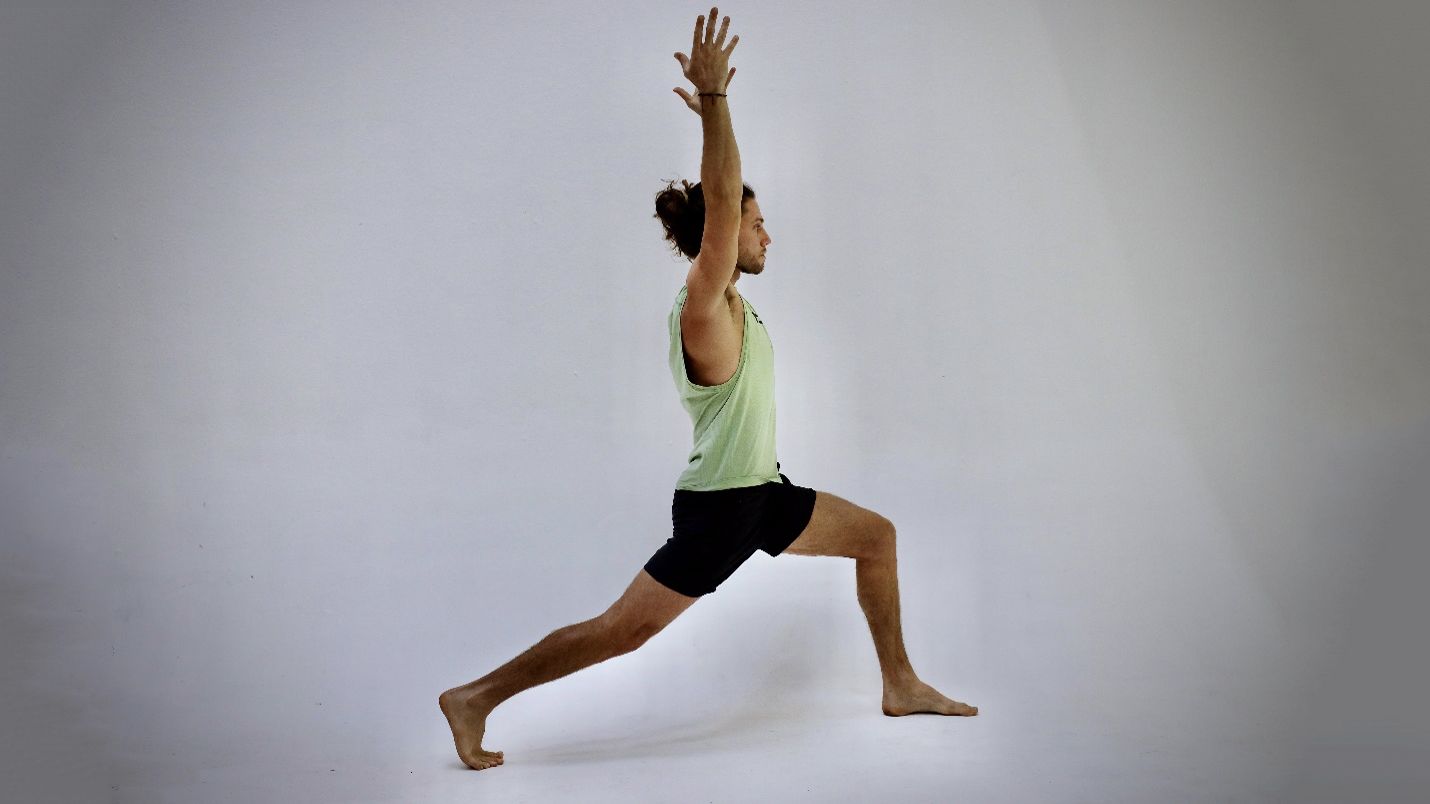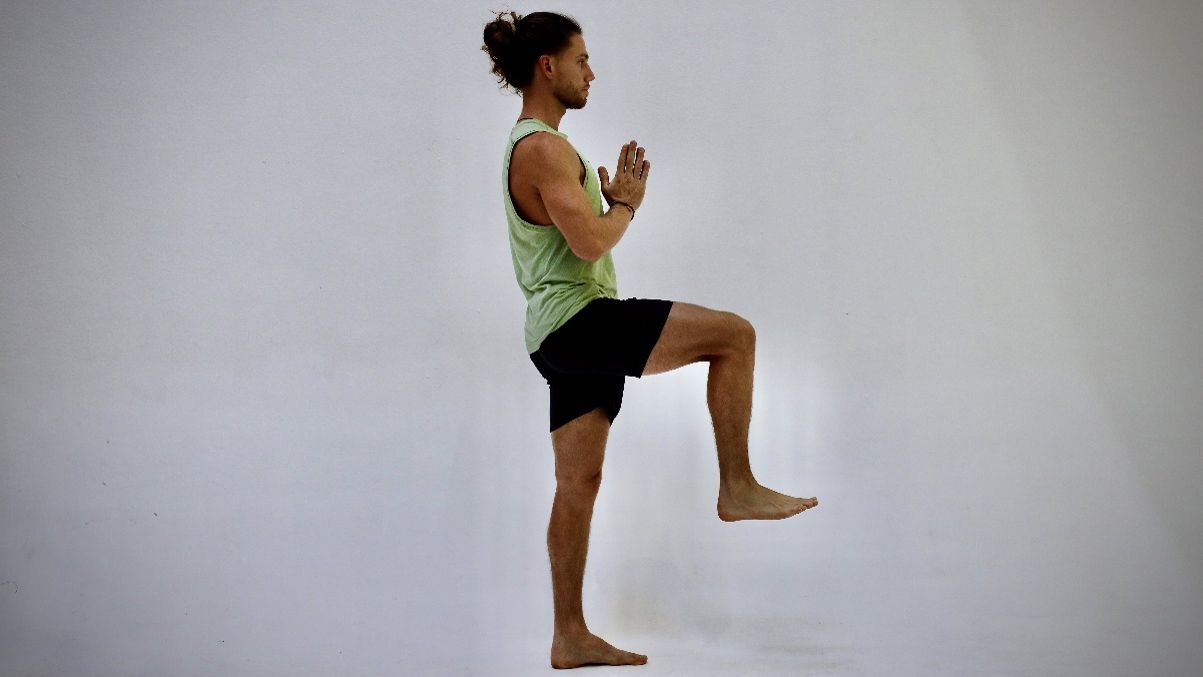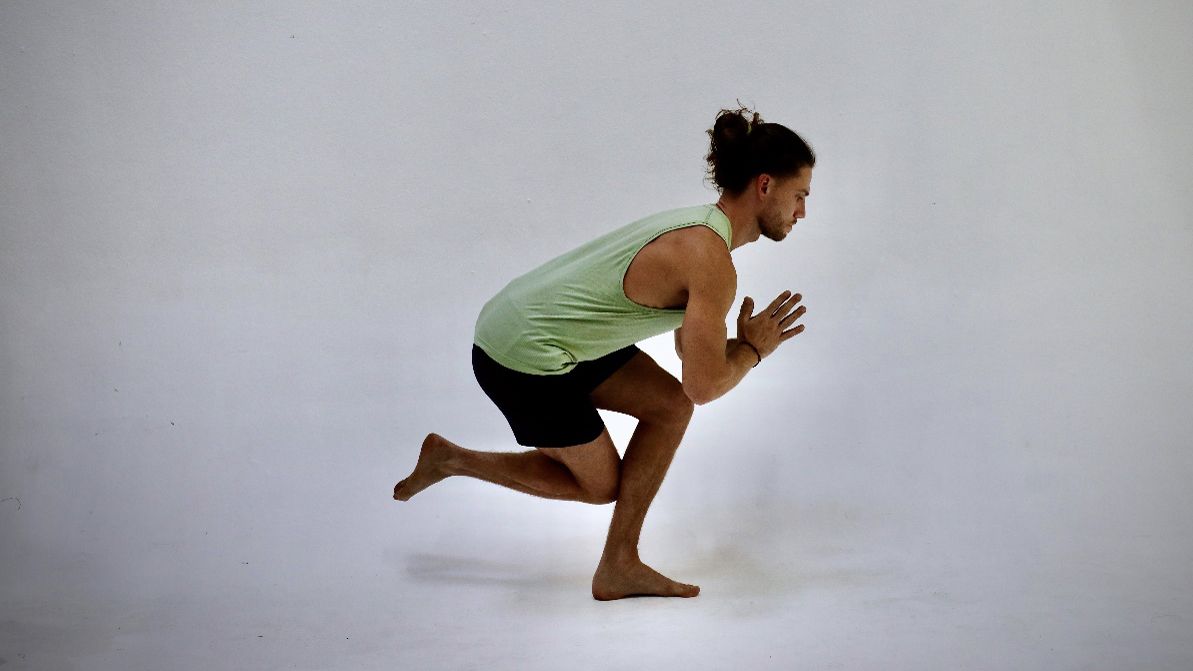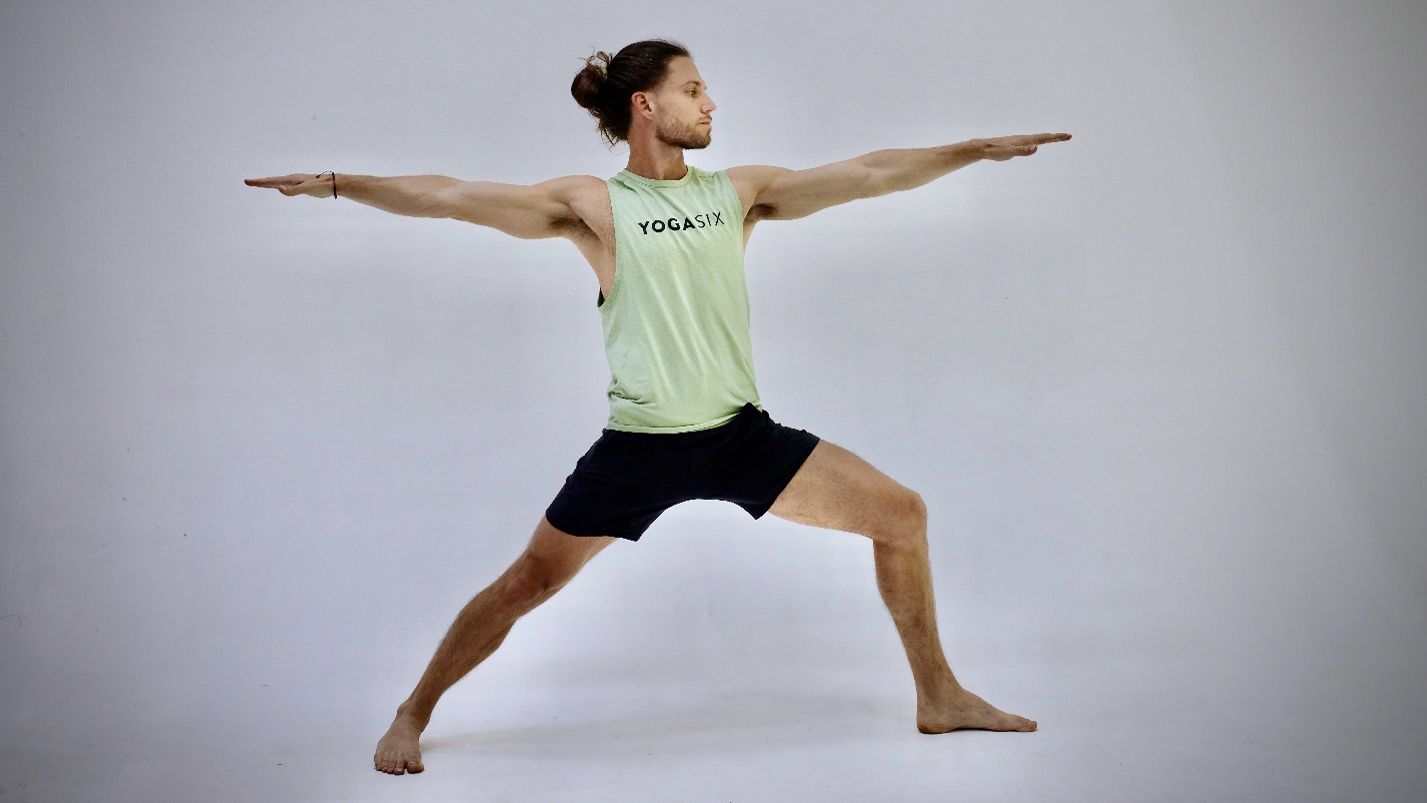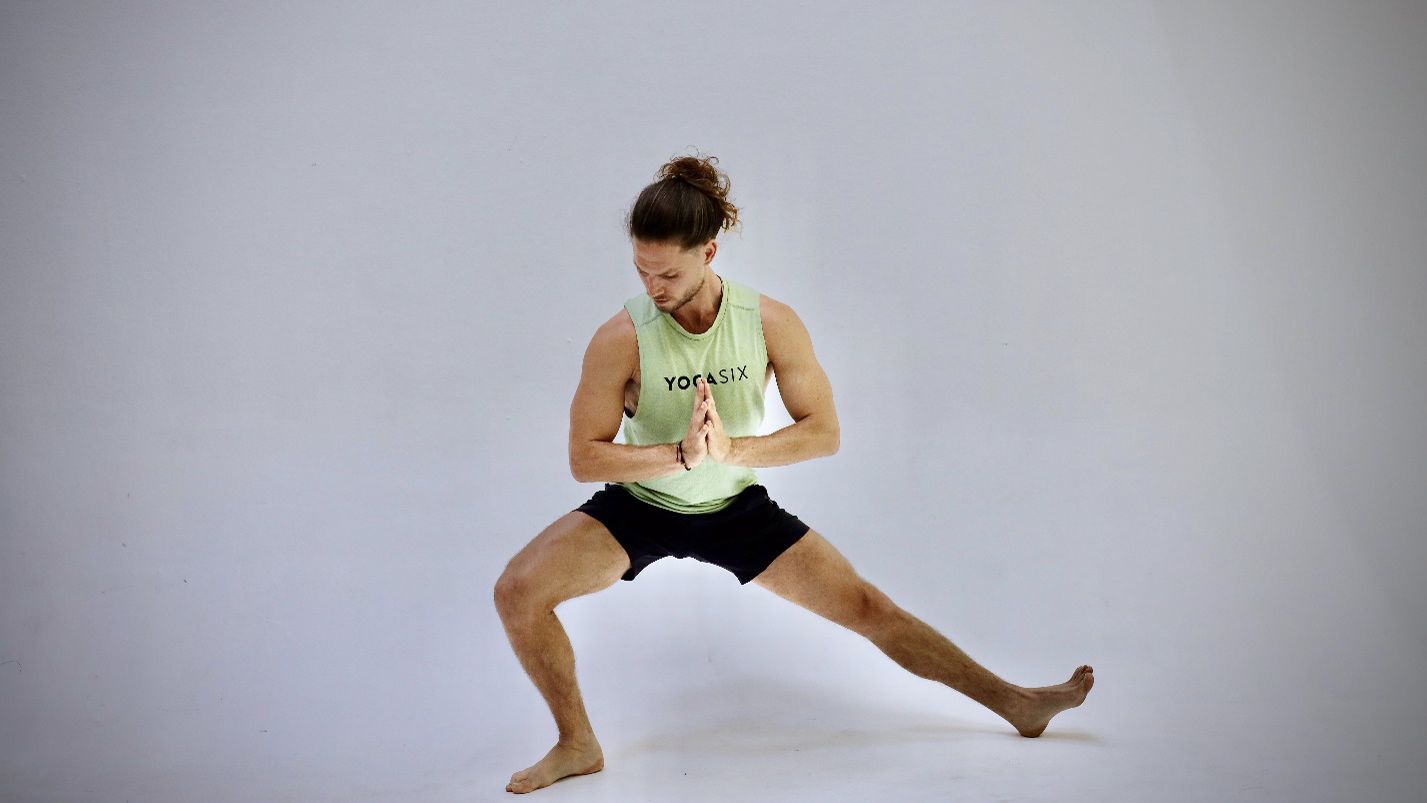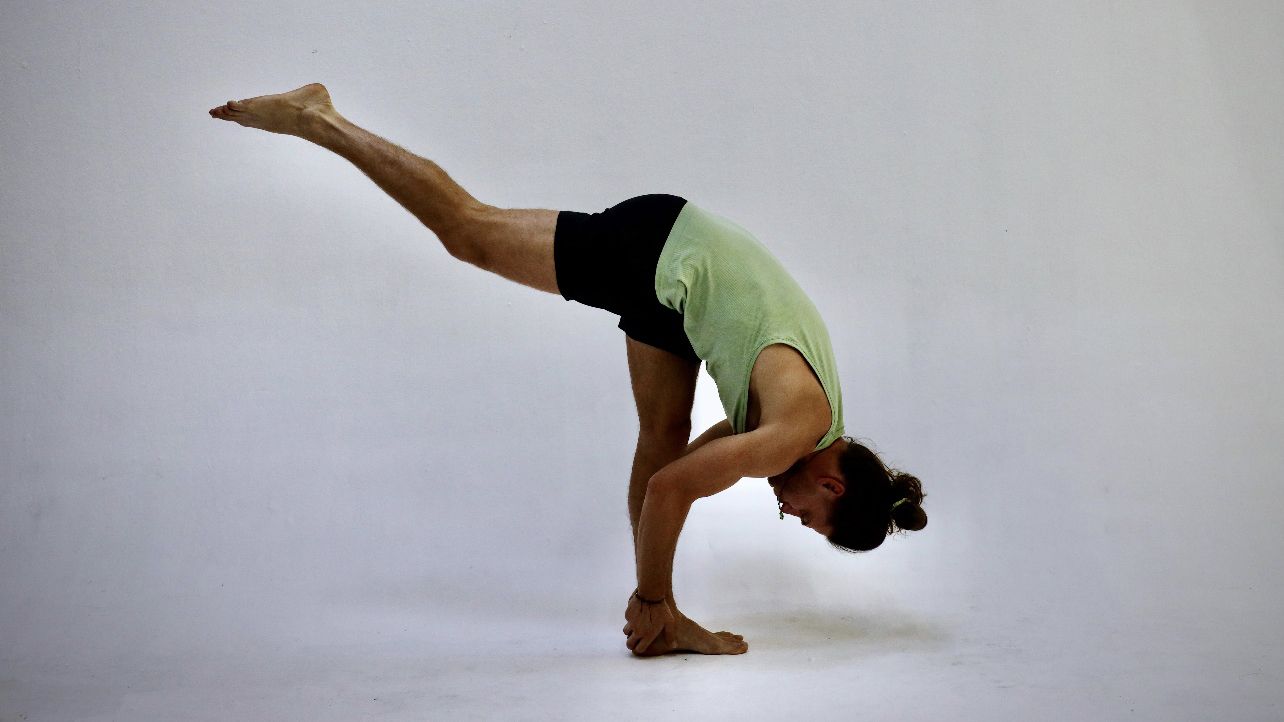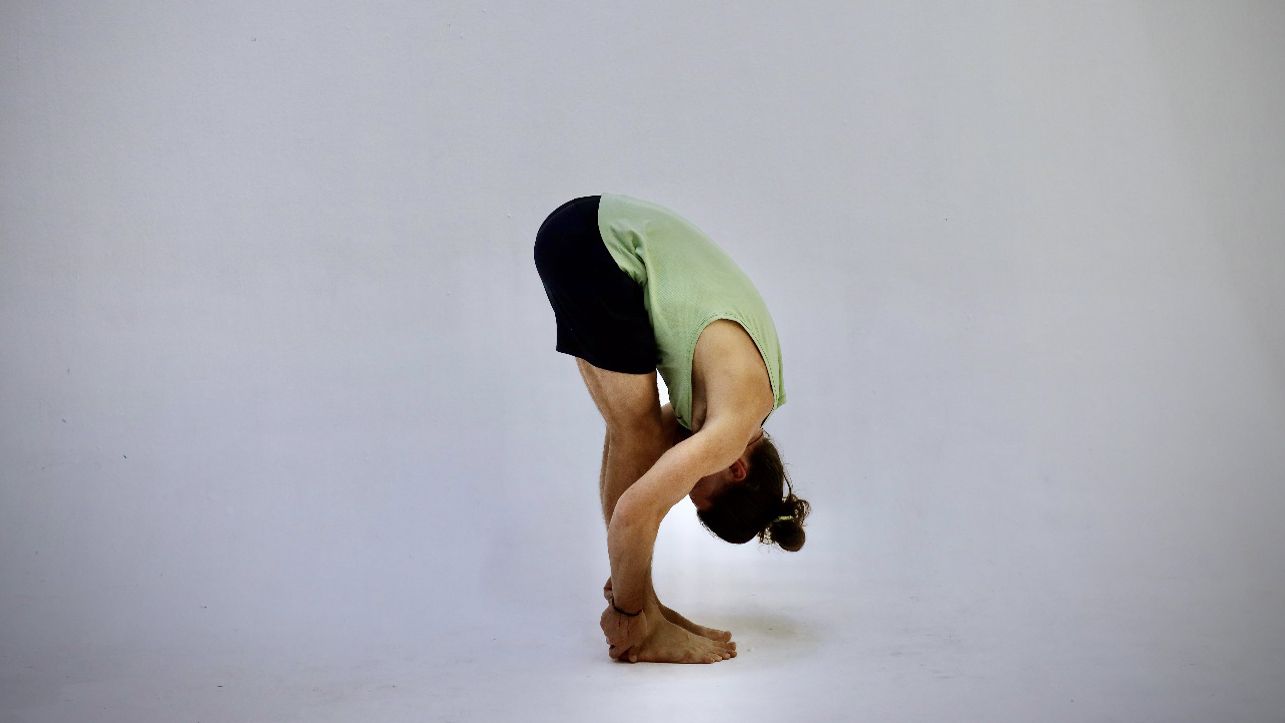Yoga is sometimes thought of as a gentle form of exercise, but a fast power flow can be a great way to build strength. If you want to focus on improving a specific area (like your core, legs or arms) you can simply practice poses that target this area.
“Building leg strength in yoga involves engaging specific muscles, holding poses for longer and challenging yourself with advanced variations,” says Elisei Rusu, the head trainer at YogaSix.
This 10-move sequence from the trainer is filled with demanding holds, strong poses and dynamic movements. It’s the perfect sequence for yogis looking to hone in on leg strength, according to Rusu, and it will help you reap the balance-boosting benefits of yoga, too.

Rusu is an experienced yoga practitioner, who has undertaken more than 1,000 hours of training. He acts as a yoga mentor and guide, and lives in California.
A 10-move yoga flow for leg strength
This workout requires minimal equipment. As it’s a standing yoga flow, you don’t even really need a yoga mat, although you may find that having one underneath helps with foot grip. (If you’re in the market for a new one, have a look through our guide to the best yoga mats for every kind of yogi.)
Before diving into the sequence, we’d also recommend you warm up with some gentle movements, like these yoga stretches for beginners.
During the workout itself, Rusu recommends you hold each posture for five breaths, working to longer holds as you get comfortable with the sequence.
1. Chair pose
(Image credit: Elisei Rusu)
Keep your feet together and bend at the knees, keeping your back straight and your glutes (butt muscles) slightly tucked underneath you. Send your arms straight up past your ears, keeping your neck in line with the spine. This pose is great for strengthening the thighs and glutes.
“Chair pose strengthens the core, quadriceps, hamstrings and glutes while challenging your balance,” Rusu says.
2. One-legged chair
(Image credit: Elisei Rusu)
After holding chair for several breaths, lift one foot, keeping the knees squeezing together. This will fire up the standing thigh.
“This is a variation of chair pose that strengthens the quadriceps, hamstrings, and glutes while challenging your balance on one leg,” Rusu says. “You’re going to feel this one. It’s a great way to build heat in your quads and glutes. It’s OK to shake!”
3. High lunge
(Image credit: Elisei Rusu)
Next, move into high lunge, by sending the lifted foot to the back of the mat. Keep your pelvis tucked slightly under and your hips facing forwards. This pose will target your front leg muscles while stretching your back hip.
“This pose works on the quadriceps, hamstrings and glutes, enhancing leg strength. The balancing aspect helps to develop flexible stability,” says Rusu.
4. One-legged mountain pose
(Image credit: Elisei Rusu)
Next, spring forwards off the back leg into a one-legged mountain pose. Try to keep your standing leg and spine straight while pulling your knee into the chest.
“This pose helps to improve posture and establish a strong foundation for the rest of the sequence,” says Rusu. “It brings a sense of grounding and not only engages the leg muscles but also works on the core, enhancing overall strength and stability.”
5. Warrior 3 variation
(Image credit: Elisei Rusu)
Stay on the standing leg and send the lifted leg back into Warrior 3 pose, making a T shape with the body. Try to keep the lifted leg and the torso parallel to the floor.
“Warrior 3 strengthens the whole back side of the body, including the shoulders, hamstrings, calves, ankles and back,” says Rusu. “It also tones and strengthens the abdominal muscles.”
6. Shrimp squat
(Image credit: Elisei Rusu)
Still balancing on the standing leg, dip into a shrimp squat, bending the standing leg and bending the lifted leg behind the opposite knee. This will strengthen the standing thigh and glute.
“One-legged yoga balance pose when practiced will strengthen the muscles of the legs, mainly the adductor muscles (inner thighs) and the gluteus maximus (buttocks) of the weight bearing leg,” says Rusu.
7. Warrior Two
(Image credit: Elisei Rusu)
Finally, bring that lifted leg down, moving into a warrior two pose.
“This all-in-one classic pose strengthens your legs, glutes, hips, core, chest, shoulders and arms. Holding the pose for an extended period of time will also help develop endurance. It helps flush out the hips after your shrimp squat” says Rusu.
8. Side lunge (skandasana)
(Image credit: Elisei Rusu)
Bend the back leg and dip down into a side squat. Try to keep your back heel rooted down as your front toes peel up towards the sky.
“Skandasana is one of my favorite postures because of its ability to easily link postures in a flowy way,” says Rusu. “This pose targets the quadriceps, hamstrings and glutes, building leg strength and flexibility while opening the hips. Play around with the level, it’s OK to start with your hips high then gradually get as close to the floor as your hips open up.”
9. Standing splits
(Image credit: Elisei Rusu)
One final burst of energy. Spring forward into standing splits to once again target that standing leg and glute.
“This pose strengthens the thighs, knees and ankles, and also stretches the groin muscles,” Rusu says. “Supporting your body’s weight on one leg, while upside-down, will greatly challenge and improve your balance. It’s a great posture to build confidence in going upside down. I like to think this posture provides you with a new perspective.”
10. Forward fold
(Image credit: Elisei Rusu)
Finally, bring down your lifted leg and come into a gentle forward fold to finish things off.
“Not so much a leg strengthening pose but I added it for its ability to stretch the hamstrings, glutes and spine along the back of the body,” says Rusu. After all of those moves, you’ll need a stretch. “It’s a great way to release tension in your legs and helps you reset so you can get back into chair pose to transition to the other side.”
Then, repeat the whole sequence on the other leg.
Elevate your yoga for leg strength practice
By repeating this sequence a few times a week, you should start to notice your legs feel stronger and look more toned. However, over time you may start to find that the sequence feels too easy. The best way to keep challenging your body is to play with your practice and change it over time.
To elevate your practice, Rusu recommends:
- Focusing on actively engaging the muscles of your legs in each pose. This means consciously contracting the quadriceps, hamstrings, glutes and calf muscles to create stability and support. By actively engaging the leg muscles, you increase the intensity and effectiveness of the poses.
- Hold poses for longer. Holding the poses for longer periods builds endurance and strength in the leg muscles.
- Experiment with variations. For example, in chair pose, you can lift your heels, rise onto your toes, or interlace your fingers behind your back and extend your arms upward for a more challenging variation.
- Use props. Props, such as yoga blocks, straps or a wall, can assist you in building leg strength. Try this resistance band leg workout to kick things up a notch.
- Be consistent. Aim to practice leg-strengthening poses at least 2-3 times a week to see improvements in your leg strength.
Final notes
Whether you’re new to yoga or are a seasoned yogi, this flow is a great way to target thighs, calves and glutes. However, always prioritize safety. “Remember to listen to your body and progress at your own pace. It’s important to practice mindfully and avoid pushing yourself beyond your limits, as this can lead to injury,” Rusu says.
“Always warm up before starting your yoga practice and modify poses as needed to suit your abilities and limitations.”

